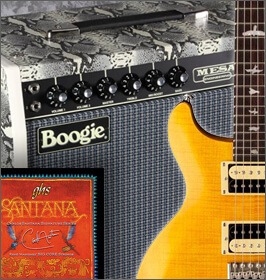Written by premiere Latin percussionist/bandleader Tito Puente in the early ’60s, “Oye Como Va” is a deceptively simple two-chord tune that utilizes a repetitive rhythmic and harmonic theme to drive a series of bouncy melodies. The song is then dressed up by alternating a catchy vocal line with instrumental motifs — traded back and forth between horn section and flute. An electronic piano covers the trademark chord pattern.

All in all, Tito’s version is a classic Cha Cha tune in the Latin vein, and represents some of the best elements of that style. Santana‘s version, on the other hand, takes the song into a different direction altogether.
In the Santana Oye Como Va version (which first appeared on Abraxas, in 1970), the chordal hook is played by a Hammond B3 organ, which introduces a heavier feel from the beginning. Carlos Santana, of course, covers both the horn and flute melodies, adding some trademark blues guitar licks in the bargain.
Another factor is the vocal line, which, in Santana, is sung by less people, emphasizing the melody and harmony parts even more than on Tito’s version. Additionally, the vocal phrase occurs at only two points in the song (repeated only once each time), which makes it stand out even further.
Gregg Rolie contributes an organ solo that features his distinctive feel — a combination of blues and rock. Like Santana’s, Rolie’s playing on the track is uncluttered, but incorporates strong melodic themes.
Part of what makes Santana’s guitar riffs on Oye Como Va so memorable are the nuances he throws in: a classic Carlos “hammer/pull” trill during the second and third melodies, and a series of slides up and down the high “E” string throughout.
With it’s undeniable dance beat, and melodic, chordal and rhythmic hooks, it’s no mystery that Oyo Como Va has maintained its position as one of Santana’s best-loved songs.


